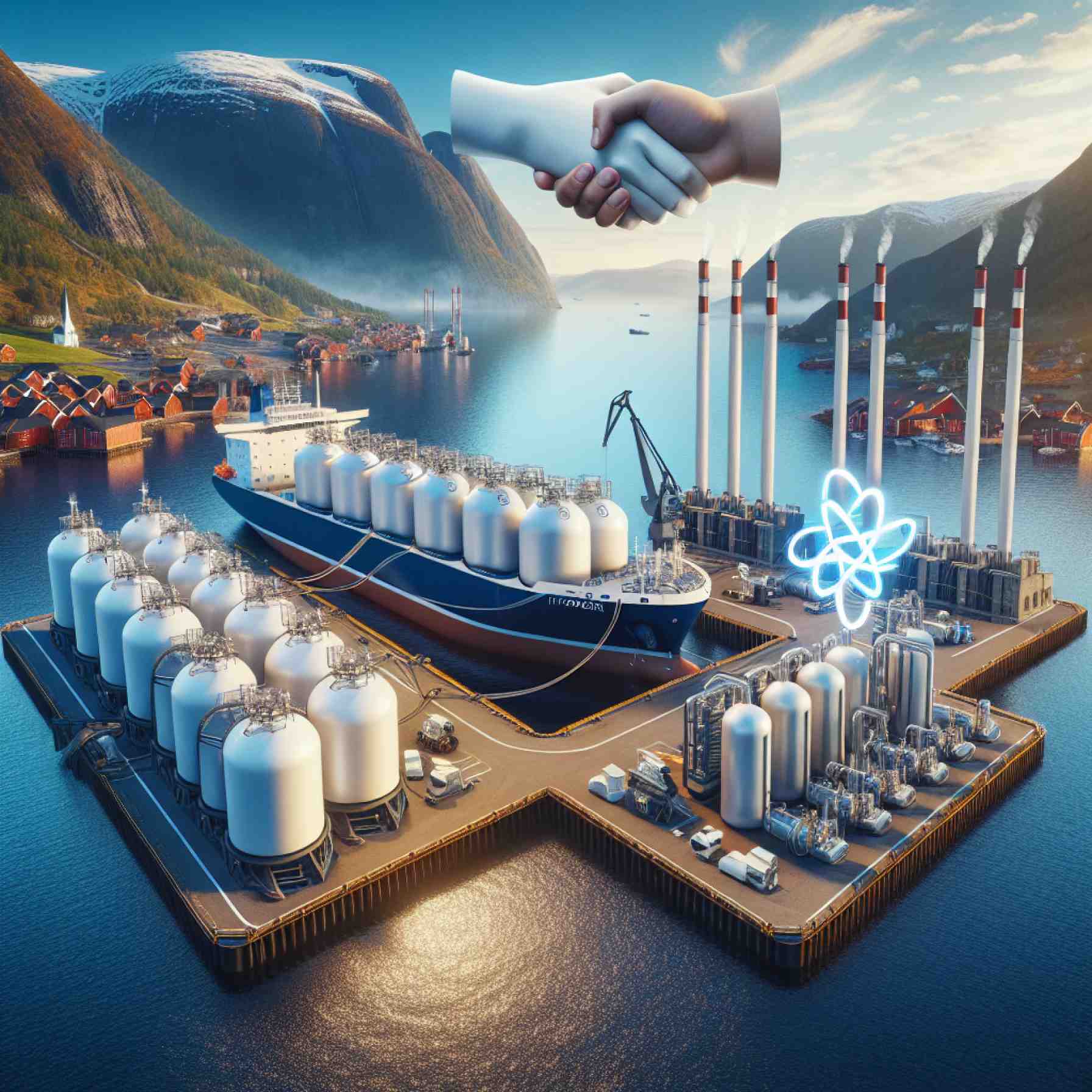
- The Bodø project in Norway focuses on using green hydrogen to revolutionize maritime transport.
- A key partnership includes Cyient (India), GreenH (Norway), and Luxcara (Germany).
- They are developing a state-of-the-art green hydrogen production and distribution facility in Bodø.
- The facility aims to enhance Norway’s hydrogen infrastructure and support sustainable ferry operations.
- Operations are set to commence in fall 2024, providing hydrogen to Torghatten Nord AS for the Vestfjorden ferries.
- Cyient leads engineering efforts, crafting detailed blueprints for the facility’s construction and operations.
- The initiative is pivotal for integrating green hydrogen in maritime and industrial sectors, setting a model for sustainability.
- This project highlights how strategic collaborations can drive substantial changes in the energy industry.
Amid Norway’s vast and wind-swept landscapes, a trailblazing effort is underway to harness the power of green hydrogen and fuel a cleaner, more sustainable future for maritime transport. Spearheading this revolution is an exciting partnership located in Bodø, where the innovative synergy of engineering technology and renewable energy is set to redefine how ferries traverse the Vestfjorden.
At the heart of this ambitious project is Cyient, an Indian engineering powerhouse, joining forces with GreenH, a Norwegian eco-pioneer, and Luxcara, a German asset manager with a keen eye on renewable ventures. Together, they are crafting a state-of-the-art facility dedicated to the production and distribution of green hydrogen at Langstranda in Bodø, Norway. This collaborative venture doesn’t just aim to nurture Norway’s hydrogen infrastructure but also to backbone its maritime sector’s grand vision of sustainability.
The Bodø facility is a testament to Cyient’s commitment to blending cutting-edge technology with eco-friendly solutions. The plant isn’t just a service provider; it is a beacon of innovation, promising a greener tomorrow. Envisaged to begin operations in the fall of 2024, the facility will supply hydrogen to Torghatten Nord AS, fueling the iconic Vestfjorden ferries—a crucial step in reinventing maritime logistics with cleaner alternatives.
Emphasizing their pivotal role, Cyient is channeling its robust expertise in green hydrogen engineering. The company’s commitment stretches beyond mere partnership; they are crafting the detailed engineering blueprints that will guide the facility’s construction and operation. This initiative is not just about energy transitions; it’s about developing an efficient, sustainable system that exemplifies the ingenuity needed in today’s pressing environmental landscape.
As the world grapples with climate change and the quintessential shift toward renewable energy, ventures like the one at Bodø exemplify how strategic collaborations and technological excellence can sculpt a sustainable tomorrow. More than fueling ferries, this project illuminates a pathway for integrating green hydrogen as a cornerstone of future industrial and maritime endeavors.
While the world watches, Norway steers the ship toward a future where green hydrogen might dominate the currents of clean energy, driven by pivotal actions and alliances that not only dream but deliver substantial change. This marks the dawn of an energy era, as possibilities crystallize into real-world applications through innovative partnerships and unwavering pledges towards a greener globe.
How Norway is Leading the Charge in Green Maritime Solutions with Hydrogen Power
Uncovering New Insights in Norway’s Green Hydrogen Revolution
Norway’s ambitious project in Bodø represents a rising wave of transformative changes within the maritime industry, leveraging green hydrogen to pivot towards a more sustainable and eco-friendly future. As this initiative unfurls, it brings to light several additional aspects and potential impacts that were not fully explored in the original source material.
The Broader Impact of Green Hydrogen on Maritime Transport
Green hydrogen, produced via electrolysis using renewable energy sources like wind or solar, emits no greenhouse gases during its production and use. This makes it a cornerstone for sustainability, particularly in sectors that are traditionally heavy polluters such as maritime transport. By transitioning to hydrogen-powered ferries, Norway aims to drastically reduce its carbon footprint.
Real-World Use Cases
1. Ferry Operations Efficiency: The use of hydrogen improves operational efficiency with shorter refueling times compared to traditional fuel, allowing for less downtime and more trips.
2. Regional Influence: This project serves as a model for other coastal regions worldwide, showcasing the viability and benefits of such transitions on both environmental and economic fronts.
Market Forecasts and Industry Trends
The global green hydrogen market is anticipated to witness substantial growth, driven by increasing pressure to decarbonize industries. According to a report by Allied Market Research, the green hydrogen market size was valued at $3.09 billion in 2020 and is projected to reach $58.59 billion by 2030. Norway’s trailblazing initiative aligns with these trends, positioning it at the forefront of maritime decarbonization efforts.
Reviews & Comparisons
In comparison with traditional LNG-powered vessels, hydrogen-powered ferries offer substantial environmental benefits with zero CO2 emissions and reduced noise levels, especially valuable in sensitive ecological areas.
Challenges and Limitations
Of course, the implementation of hydrogen technology is not without its challenges:
– Infrastructure Development: Establishing a widespread hydrogen production and distribution infrastructure is capital intensive.
– High Initial Costs: The initial set-up costs for production facilities and retrofitting vessels can be prohibitive.
– Fuel Cell Technology Maturity: While advancing rapidly, fuel cell technology still requires further development to improve efficiency and lower costs.
Insights & Predictions
The success of the Bodø facility could signal a significant turning point in maritime transport, leading to broader adoption of hydrogen across European ports, followed by global markets. Upcoming regulations could further propel the shift, making hydrogen a competitive alternative.
Quick Tips and Actionable Recommendations
1. Invest in Knowledge: Stakeholders in the maritime industry should educate themselves about the benefits and logistics of hydrogen fueling technologies.
2. Collaborate with Innovators: Partnering with technology and engineering firms like Cyient could provide valuable insights and technical expertise.
3. Monitor Regulatory Changes: Keep abreast of changes in environmental policies that may impact the adoption and integration of green fuels.
Conclusion
The partnership between Cyient, GreenH, and Luxcara in Bodø is more than just a project— it is a vision for a sustainable future. With its commitment to green hydrogen, Norway is setting a standard for environmental responsibility and innovation in maritime transport that other countries could emulate. As this project progresses, it offers lessons and blueprints for future initiatives globally.
For more insights on Norway’s advancements and renewable energy projects, visit Cyient’s website, GreenH’s website, and Luxcara’s website.



